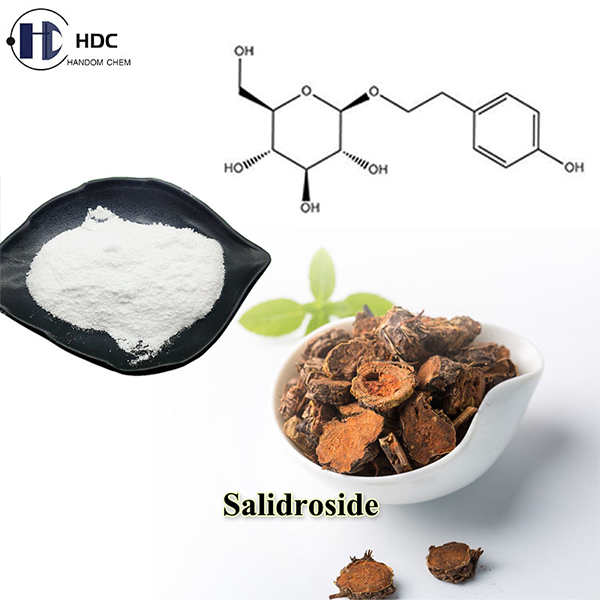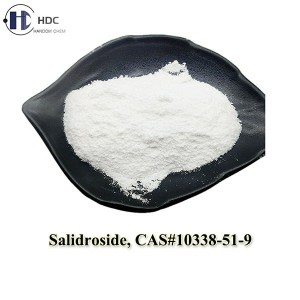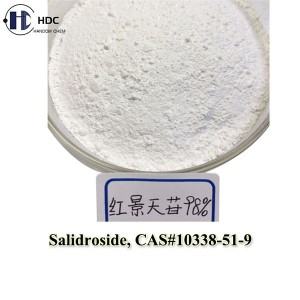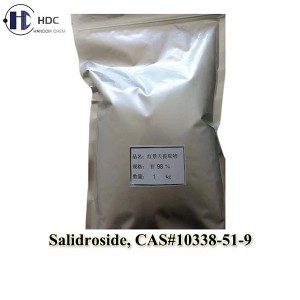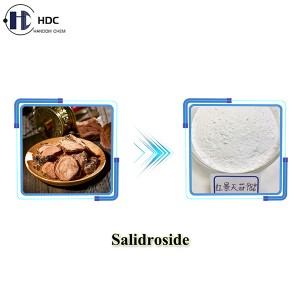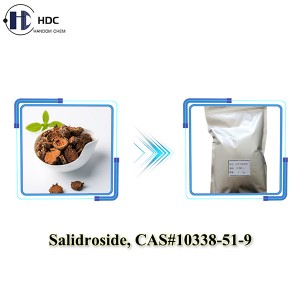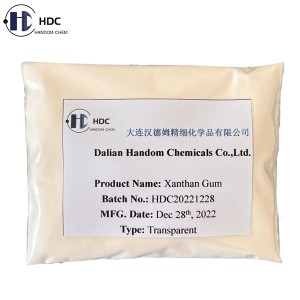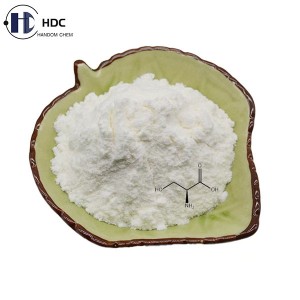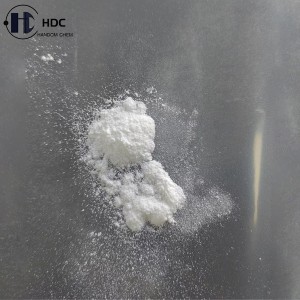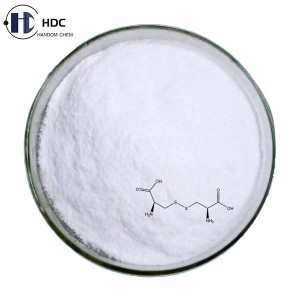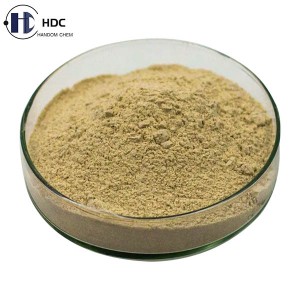Salidroside
Brief Introduction:
Salidroside is an alkaloid compound extracted from the Rhodiola rosea plant, which can also be produced by fermentation process. It has strong biological activity, can resist aging, enhance immunity, improve cardiovascular system, protect organs, and inhibit the proliferation and invasion of many tumor cells.
Salidroside is widely used in the field of medicine and health care products.
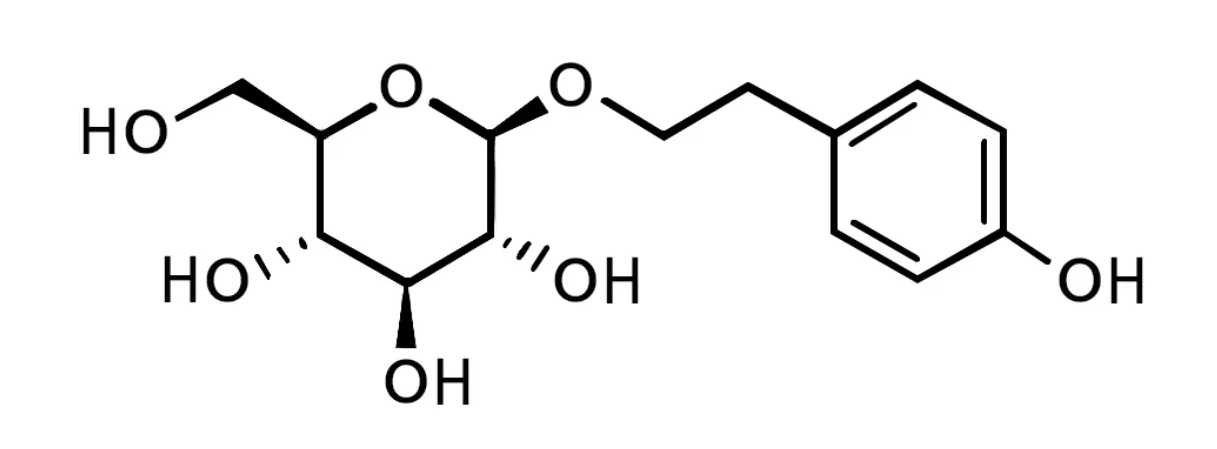
Specifications of our Salidroside:
| Test Items | Specifications |
| Appearance | White homogeneous powder or granules |
| Smell | Characteristic taste of raw materials |
| Assay | Not less than 98.0% |
| Water | Not more than 1.0% |
| Ash Content | Not more than 0.2% |
Research on Rhodiola rosea and Salidroside:
Rhodiola rosea (rosea or crenulata) is known for its effects on energy levels, mood and mental performance and has been a plant used in natural products for centuries, with salidroside, the most studied bioactive component in rhodiola, playing a major role in its efficacy.
Due to increasing demand, the rhodiola species is threatened by overharvesting and is listed as endangered by CITES (Convention on International Trade in Endangered Species of Wild Fauna and Flora).
Handom's innovative fermentation process eliminates the need to harvest endangered Rhodiola species and produces only pure salidrosides. Handom's pure salidrosides are made by fermentation (Strain Source: Saccharomyces cerevisiae), providing a sustainable and convenient source of high-quality Rhodiola rosea with consistent purity, providing room for innovative formulations in nutraceuticals and sports nutrition supplements.
Rhodiola rosea contains a large amount of rosin and salidroside, and the content of salidroside in Rhodiola rosea is much higher. [1,3]
Research shows that the efficacy of Rhodiola rosea mainly comes from rosin and salidroside, but salidroside may contribute slightly more in some areas. [4,5] In addition, rosin is only found in plants of the genus Rhodiola.
▊ Salidrosides – Driving Factors Behind Potential Uses:
While over 140 compounds have been isolated from the roots of Rhodiola rosea plants, eight active compounds help distinguish the various species:
Total rosavins (rosavin, rosin, rosarin), a group of cinnamyl alcohol glycosides (CA) [5]
Salidrosides, sometimes called salidrosides [5] Various phenolic components (tyrosol, catechins, gallic acid) [5]
Herbavirin glycosides, a flavonoid compound [5]
Among the major components, rosavin and salidroside are the core bioactive compounds.
While salidroside is present in all Rhodiola rosea plants, rosavin is unique to Rhodiola rosea. [1,5]
In natural samples of Rhodiola rosea, the two compounds are typically present in a 3:1 ratio – three parts rosavin to one part salidroside. [5]
This coexistence was crucial to Rhodiola's potential, [6] but science began to rely on salidroside as a key driver.
In isolated studies, salidroside on its own has shown a variety of benefits, [7] but when used alone, total rosavins failed to produce any decisive advantages. [7] However, the two compounds have proven to be very effective together. [6]
Studies have found that the natural ratio of the two bioactive substances can be very effective in stimulating the brain, [6] but the fact that salidroside seems to have driven the most successful research has prompted scientists to delve deeper into its direction.
▊ Tracking the Long-Term Potentiation Effects of Salidroside:
In a 2018 study published in Frontiers in Pharmacology, a team of researchers evaluated the efficacy of various Rhodiola rosea extracts in a memory synapse model. Seven different Rhodiola rosea extracts were obtained and studied, each containing different concentrations of rosin and salidroside.
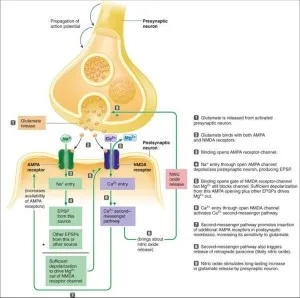
How LTP works (provided by Amazon ClassConnection)
All variants were tested for long-term potentiation (LTP) of synaptic transmission in the mouse hippocampus. The scientists analyzed the effects of single and burst stimulations, then measured population spikes in pyramidal cell activity. This stimulation indicates LTP, which is associated with improved memory and cognition. [7]
By simply comparing salidroside to rosavin, the team found that salidroside was more effective at lower concentrations, while rosavin was more effective at higher concentrations.
While this suggests that either ingredient on its own can produce some effects, testing seven rhodiola rosea extracts allowed them to take their initial findings a step further and answer the question, "Which balance of these two bioactives is better?"
By comparing extracts at a 5 mg/L dose, the study authors found that a rhodiola rosea extract containing both salidroside and rosavin outperformed the competition. [7] Not only that, they found that the extract with the highest concentration of both bioactives (about 3% each) stimulated the cells the most. [7]
While this ratio is more balanced than the commonly used 3:1, it highlights an important point—the 3:1 ratio of rosavin to salidroside is where the benefits begin to show.
However, to achieve higher efficacy, it is necessary to use extracts with more biological activity, particularly salidroside, and such extracts are now available.
Stimulating pyramidal cell activity leads to LTP, which is considered the primary cellular mechanism at the root of memory and learning. [7]
This relationship highlights the target of rhodiola rosea supplementation—cognition—but does not discuss the primary way the herb works once it is in the body. Rhodiola rosea acts as an adaptogen, combating chemical and biological stressors in the body. The drug specifically targets stressors in the central nervous system (CNS).
▊ Salidroside's Multiple Targets:
Rhodiola rosea has many potential benefits, most of which are driven by its salidroside content. But in order to discuss its uses, we first need to understand the basic mechanism of salidroside.
Once absorbed from the intestines via the SGLT1 transporter [8], salidroside affects various metabolic pathways and enzymes in the body.
A True Adaptogen: Correcting the mTOR Pathway The mammalian target of rapamycin (mTOR) is a frequently discussed topic in the sports supplement world.
It is a protein kinase that regulates many cellular functions, including cell proliferation and cell metabolism. Higher levels of mTOR tend to be associated with higher degrees of cell growth and survival. [9]
This effect is particularly useful when building muscle, as mTOR plays an important role in regulating the building, repair, and maintenance of skeletal muscle. [10] However, as with most things, there is a balance to be struck. Too much mTOR activity is not necessarily a good thing, depending on the type of cell it is helping to proliferate.
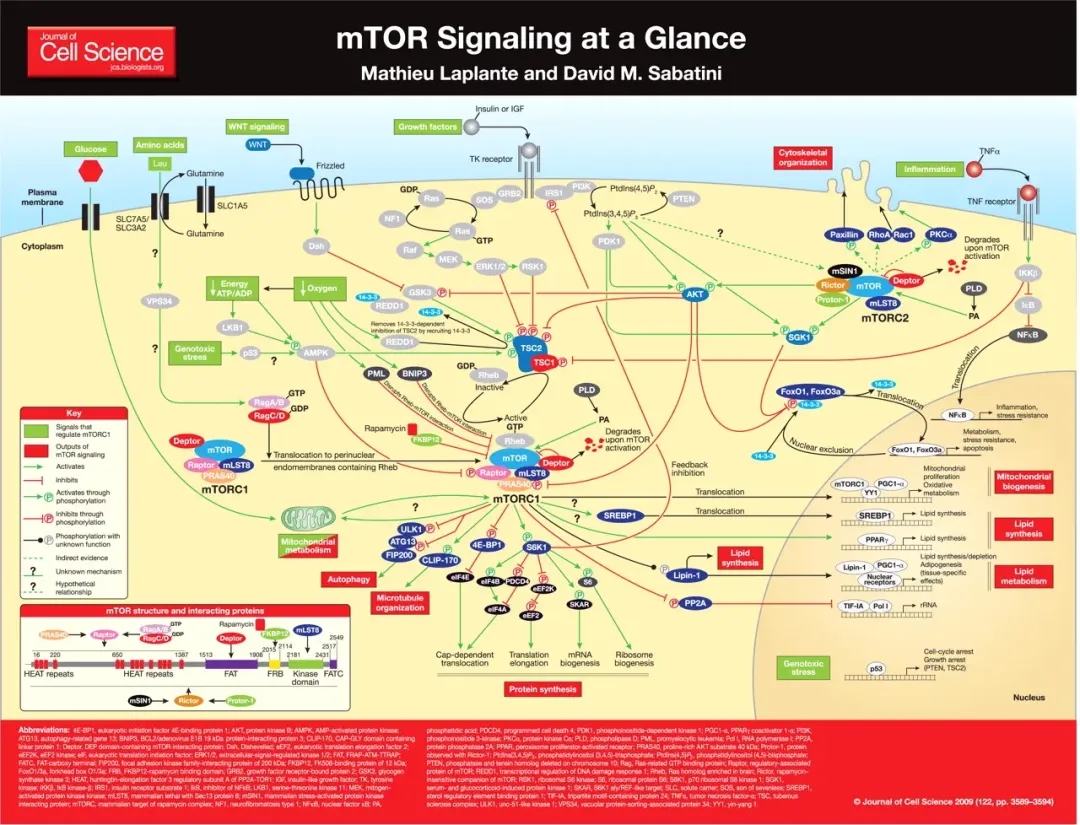
"Overview of mTOR Signaling," courtesy of Cell Science
Research suggests that the mTOR pathway is stimulated during cell growth. This is a tricky topic, as some researchers have linked mTOR to diseases such as cancer, neurodegeneration, and diabetes. [11]
It doesn’t favor “good” or “bad,” but rather supports cell growth or apoptosis. The light it shines in depends on the problem at hand. If you want to promote muscle growth, activating mTOR is something worth pursuing.
But if you’re concerned about tumor growth or worsening cognitive disease, then dampening mTOR activity should be the focus.
This “context dependency” perfectly summarizes how salidroside affects the mTOR pathway, and is exactly what we mean when we talk about adaptogens.
Studies have shown that salidroside stimulates adenosine-5'-monophosphate activated protein kinase (AMPK), effectively inhibiting runaway mTOR activity. [12]
This effect led to apoptosis in test models of bladder and colorectal cancer. [13] By correcting the engine that drives cell growth, salidroside promotes the death of harmful cells. Alternatively, the compound can turn the tables.
In 2013, a study published by the School of Public Health at Lanzhou University in China found that salidroside stimulated mTOR activity and promoted the differentiation of bone marrow mesenchymal stem cells into neural cells. [14]
In 2014, a team of researchers at Fujian University of Traditional Chinese Medicine found that salidroside protected neural cells from damage caused by reactive oxygen species (ROS), providing further evidence of active proliferation. [15] Both findings suggest that the compound functions as a neuroprotectant, primarily by activating mTOR.
Salidroside clearly affects the mTOR pathway in ways that appear to be context-dependent. Studies have shown that it activates mTOR in healthy cells while inhibiting mTOR in dangerous cells. [6] This is why it is classified as an “adaptogen” – it helps us adapt to situations, moving “up” and “down” as needed.
New research published in 2023 shows that salidroside has hormesis effects with a large stimulatory zone. [16] Hormesis is when small doses are beneficial while larger doses are less effective. [17]
Our article titled “New Salidroside Research: Neuroprotective Hormesis and Gut Health” goes into more detail on this, but it provides additional evidence that salidroside is indeed adaptogenic. Let’s take a closer look at the research on salidroside.
▊ Salidroside Regulates HIF-1 Activity:
Hypoxia-inducible factor-1 (HIF-1) is a key regulator of the body's response to hypoxic conditions (when the body is deprived of oxygen). It is a gene that helps activate numerous transcription factors that regulate oxygen delivery and metabolic functions. [18]
Hypoxia is dangerous and can cause long-term health damage. Lack of oxygen can lead to brain damage, cardiac arrest, and many other life-threatening conditions. [19] However, similar to mTOR, HIF-1 has two roles - it also helps cancer cells proliferate. [20]

Proposed Mechanism of Salidroside-induced EPO Gene Expression.[21]
Salidroside also has the ability to promote HIF-1 accumulation, which helps prevent cellular damage caused by hypoxia.
A 2012 study from the Hong Kong University of Science and Technology found that salidroside stimulated the accumulation of HIF-1 in liver and kidney cells, and the research team claimed that the rhodiola rosea ingredient has anti-hypoxic effects, which are usually produced by ingesting rhodiola rosea. [21]
In 2017, researchers from Chongqing University found that salidroside not only increased HIF-1, but also promoted angiogenesis. This process forms new blood cells and promotes blood perfusion, transporting oxygenated blood to combat hypoxic conditions such as hypoxia and ischemia. [22]
▊ Salidrosides Can Involve Neurotransmitters:
The most important pathway through which rhodiola rosea (via salidrosides) works is the neurological pathway. Specifically, this herb has a profound relationship with the release and uptake of neurotransmitters.
The Five Amine Neurotransmitters and Monoamine Oxidase Neurotransmitters are chemical messengers that carry signals throughout the central nervous system. The body uses five biogenic amines to do the vast majority of this work:
● The three catecholamines—dopamine, norepinephrine, and epinephrine—regulate mood and the body's "fight or flight" response and all the mechanisms involved. [23]
● Histamine plays an important role in the body's allergic and inflammatory responses. [24]
● Serotonin is a key regulator of mood, emotions, motor skills, and other biological processes. [25]
These chemicals are fundamental to our health—they directly or indirectly signal countless bodily processes that ultimately determine our health. They travel through the central nervous system, telling the brain what to do and facilitating action by attaching to receptors on target cells.

"Norepinephrine is synthesized from dopamine by dopamine β-hydroxylase in neurons of the locus coeruleus. Prior to final β-oxidation, norepinephrine is transported into synaptic vesicles by vesicular monoamine transporters. The vesicles are then transported along axons containing noradrenergic tracts to release sites. At the synapse, norepinephrine is released into the synaptic cleft, where it binds to various presynaptic and postsynaptic adrenergic receptors and subsequently activates different G protein-coupled signaling cascades."
Once a neurotransmitter activates a signal, one of two things happens: the signal is either taken back by the neuron that released it, or it is degraded. A variety of enzymes catalyze the degradation reaction, but two of the most common are monoamine oxidase (MAO) and catechol-O-methyltransferase (COMT). [26]
MAO has two substrates, MAOA and MAOB. The former typically processes signals in the gut and liver, while the latter operates in the brain. [27] While these enzymes do have a role in the life cycle of neurotransmitters, excessive activity can be problematic.
▊ MAO Inhibitory Activity of Rosarin and Salidroside:
The activity of these degrading enzymes has been implicated in conditions such as mood disorders, [28] depression, [29] anxiety, [30] and various neurodegenerative diseases. [31] MAO is essential for optimal central nervous system signaling and cognitive health, so it makes sense that these disorders would be associated with increased activity of enzymes that remove amines from the body.
Because of this relationship, drugs that promote neurotransmitter reuptake and treat these conditions have become popular over the past few decades—most notably monoamine oxidase inhibitor (MAOIs).

Salidroside (but not Rosarin) inhibits MAOB! [32]
The desire for effective MAOIs has fueled rhodiola’s growing popularity in both the medical and supplement worlds. A 2009 in vitro study from the University of Geneva in Switzerland found that rhodiola rosea extracts inhibited MAOA and MAOB by 80% to 90%, depending on which of three test extracts was used. [32] Interestingly, the researchers also found that Rosarin was the most active compound in the extract, tied with Salidroside.
That being said, Salidroside is also very effective in this regard. In a 2019 study, mice treated with Salidroside showed suppressed MAO activity and improved dopaminergic function. [33] The attenuation of these MAO-degrading enzymes is at the heart of rhodiola rosea’s supplemental potential. Before we get to that, however, there is another neurological effect of the compound.
▊ Salidroside Regulates Neuropeptide Y:
In addition to using neurotransmitters to perform biological actions, the body also synthesizes and uses neuropeptides as messengers. Neuropeptide Y (NPY) is one of the most influential of these compounds in terms of appetite signaling, [34] controlling many of the sensations and cues associated with hunger.
NPY activity is primarily found in the cortex, hippocampus, and hypothalamus, and it also stimulates cardiovascular function, cognition, and stress responses. [34] Notably, surges in NPY activity have been linked to increased appetite and resistance to stress and anxiety. [34,35] This relationship makes sense—everyone responds to stress differently, and while some people experience increased hunger when dealing with chronic stress, [36] studies have also shown that appetite decreases in response to acute stress. [37]
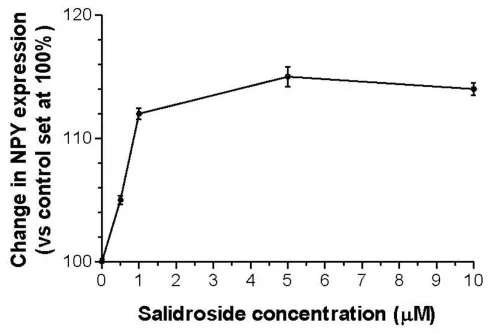
Salidroside Increases Neuropeptide Expression in a Dose-dependent Manner [38]
Maintaining normal NPY activity is important when it comes to regulating stress. In a 2012 study published in Frontiers in Neuroscience, a team of scientists found that a combination of rhodiola rosea and other adaptogens significantly stimulated NPY. [38] They attributed this effect specifically to salidroside. Additional testing found that the bioactive compound was effective in increasing NPY activity, albeit at higher doses than the adaptogen mixture. [38]
Better stress response given that salidroside induces NPY activity, it would be tempting to conclude that it would have an effect, such as increased appetite. But such a connection would be foolish.
Instead, the increase in NPY activity suggests that salidroside is able to change the body’s response to stress, which is arguably the most desirable benefit of rhodiola rosea supplementation.
▊ Salidroside: Potential Gut Health Benefits:
New preclinical research published in 2023 suggests that salidroside can improve gut health. [39] In this study, researchers divided mice into groups, one of which was given a standard chow diet, while the other was given a high-fat diet (HFD), which causes metabolic dysfunction and obesity.
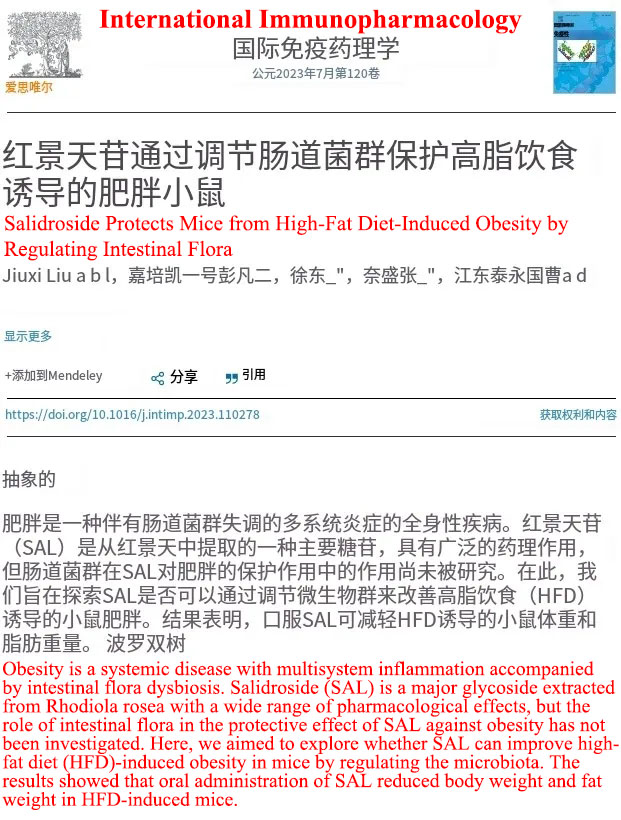
However, Salidroside Was Able to Reverse Most of the Metabolic Dysfunction in Mice Fed a High-Fat Diet! [39]
Furthermore, fecal transplants from salidroside-treated HFD mice to other sick HFD mice greatly improved the gut health of the transplant recipients, leading the researchers to believe that salidroside could provide substantial gut health benefits.
▊ How Long Does Salidroside Work: Reduce Stress in Just 14 Days:
Adaptogens are substances that can improve the body's response to stress, and rhodiola rosea is one of the most effective types. In a 2015 study by researchers at the University of Surrey in the United Kingdom, eight subjects with mild anxiety and self-reported stress volunteered to test the effects of this herb.
The subjects were divided into two groups—one took 200 mg of rhodiola rosea twice a day, while the other took a placebo. The treatment lasted 14 days, with self-reported mood and cognitive scores used as a measure of success. The scientists found that participants who took rhodiola rosea experienced significant reductions in anxiety, stress, anger, confusion, and depression, and reported feeling an overall improvement in mood at the end of the testing period. [43]
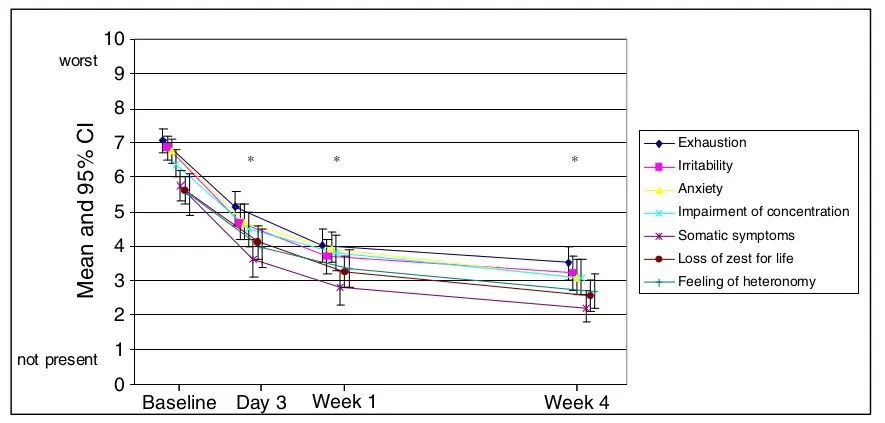
Significant Changes in Just 3 Days [42]
Another study, published in Phytotherapy Research in 2012, administered a standardized Rhodiola rosea extract to 101 subjects in an open-label trial. The extract was dosed at 200 mg twice daily for four weeks.
At the end of treatment, the research team assessed scores using a number of tests and questionnaires. Not only did the subjects report improvements in all areas of stress symptoms, [42] but the researchers reported that the extract was effective within three days of the initial treatment. [42]
▊ Rhodiola Rosea May Reduce Symptoms of Depression:
Given that many biological responses to stress occur in the central nervous system, [44] the relationship between stress and brain function is quite strong. In particular, stress has a significant impact on the production of chemicals (or neurotransmitters) that promote healthy brain function.
Exposure to stress can significantly alter the activity and reception of neurotransmitters, interfering with normal signaling. [45] This chemical imbalance, particularly of dopamine, norepinephrine, and serotonin, can lead to depression. [46]
Exposure to stress certainly does not always lead to depression, but as chronic stress prolongs chemical imbalances in the central nervous system, the likelihood of this developing becomes increasingly greater.
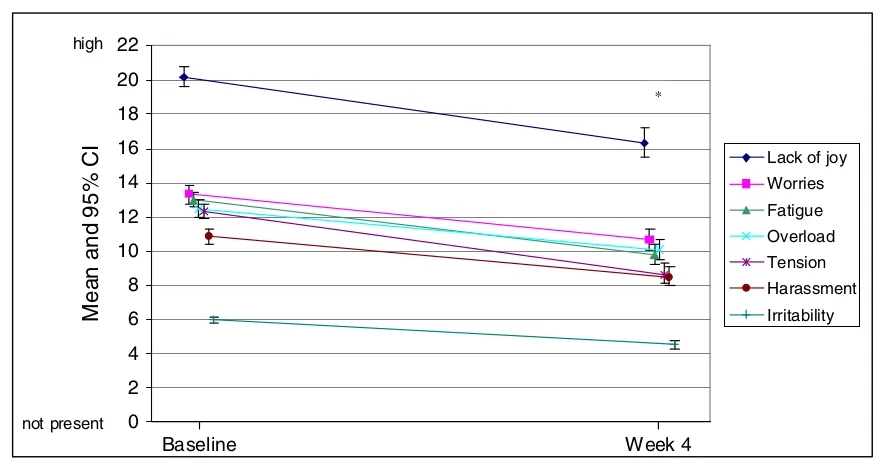
There Was a Reduction in “Lack of Happiness” on the Perceived Stress Questionnaire – Assessed at Baseline and after 4 Weeks of Treatment. [42]
Because it is a monoamine oxidase inhibitor, research supports the use of rhodiola rosea extract to reduce depressive symptoms. The aforementioned study by researchers at the University of Geneva (which found an 80% to 90% inhibition of MAO activity after rhodiola rosea treatment) directly cites potential antidepressant applications. [32]
This potential was first suggested about two years ago in a 2007 study published in the Nordic Journal of Psychiatry. In this double-blind, placebo-controlled study, researchers evaluated the effects of daily doses of either 340 mg or 680 mg of a standardized rhodiola rosea extract in people with depression.
Changes in scores on the Beck Depression Inventory (BDI) and Hamilton Depression Scale (HAMD) were compared after 42 days, with higher scores indicating worsening symptoms. They found that both groups had a 65% to 70% decrease in HAMD scores, with the higher dose group experiencing a slightly greater decrease in BDI scores than the 340 mg group. [47] Overall, volunteers who supplemented with rhodiola rosea experienced significant improvements compared to placebo. [47]
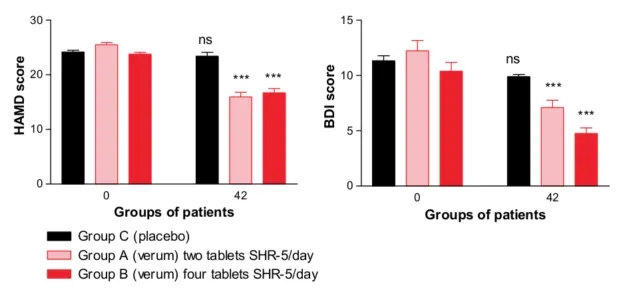
Rhodiola Rosea Significantly Reduced Depression Scores [47]
While clinical treatment should be considered the primary option for battling mood disorders, supplementation with Rhodiola rosea has some promise for relief. This herb has become a hot topic in the psychiatric community. Additional studies evaluating its efficacy are ongoing. [48] Neurotransmitter activity-boosting properties are present, as are mood improvements. But more research is needed before anyone can rightfully claim that Rhodiola rosea is more than just a natural herb with antidepressant activity.
▊ Rhodiola Rosea Fights Mental and Physical Fatigue:
We’ve all struggled with fatigue, whether it’s at the end of a long workday, after a tough training session, or dealing with a stressful situation. However, when dealing with chronic stress and depression, fatigue can escalate into more than just an indirect problem—as the drowsy feelings and tendency to become increasingly difficult to deal with become more difficult. [49] Although fatigue-related problems don’t always coexist, research suggests that they are closely related, and if you’re dealing with one, you may increase your likelihood of developing problems with the other. [50]
100 mg, 20 days
As research on rhodiola rosea supplements suggests, this correlation also applies to potential treatments. In April 2000, researchers at the Volgograd Medical College in Russia published a study analyzing the effects of a standardized rhodiola rosea extract on college students during a stressful exam period. Conducted in a double-blind, placebo-controlled, repeated low-dose fashion, students took 100 mg of the extract daily for 20 days. The researchers found significant improvements in various indicators of fatigue—cognition, mental clarity, physical health, and, most importantly, overall well-being. [51]
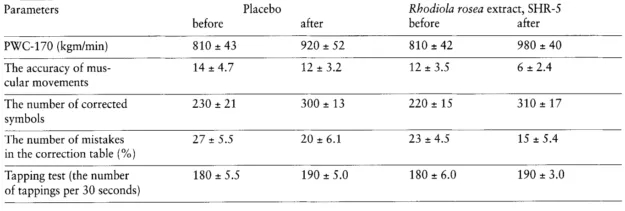
When people are tired and exhausted, they make fewer mistakes and have higher accuracy on the test? This has important implications for our modern society. [51]
370 or 555 mg reduced markers of mental and physical fatigue
Further research also supports the effectiveness of other doses—higher and shorter in duration. In a 2003 study published in the journal Phytomedicine, scientists gave college students either 370 mg or 555 mg of a standardized extract in a single-dose, placebo-controlled study. Using a proprietary metric called the Anti-Fatigue Index, which measures multiple markers of general sleepiness, they found that both doses significantly improved markers of mental and physical fatigue compared to placebo. [52]
▊ Rhodiola Rosea Enhances Athletic Performance:
Increased energy is not only seen in academic research and the workplace, but also in athletic performance. In 2004, a clinical trial published in the International Journal of Sport Nutrition and Exercise Metabolism tested the relationship between rhodiola rosea supplementation and athletic performance. The study was conducted in two phases:
Phase I – Subjects took 200 mg of a standardized rhodiola rosea extract daily for two days, and different measures were assessed one hour after ingestion. On the first day, the researchers measured limb velocity, eye response, and consistency of attention. On the second day, they measured maximum knee extension torque and endurance.
Phase II – Subjects followed the Phase I procedure twice, with the only difference being that they took 200 mg of the extract daily for four weeks. In Phase I, the team found that rhodiola rosea significantly increased time to exhaustion and VO2max. [53] These increases remained stable in Phase II, and the test subjects showed similar improvements. [53]

This research suggests that Rhodiola rosea may improve exercise performance by increasing energy levels and combating exercise-related fatigue, both acutely and chronically.
▊ Rhodiola Rosea Boosts Serotonin Production:
Rhodiola Rosea may also provide serotonin boosting benefits, according to a 2012 study published in Phytomedicine. Noting that nicotine withdrawal can lead to depression-like symptoms, such as impaired serotonin production and reception, scientists induced nicotine withdrawal in mice. They found that injections of rhodiola rosea extract increased serotonin expression in a dose-dependent manner. [54] Notably, this increase was seen in both the test and control groups, [54] suggesting that general use, rather than context-dependent application, may be what may see such benefits.
5-HT 1A Activation
The same study also determined how the herb achieves these results. The researchers found that rhodiola rosea extract increased protein levels at the 5-HT1A receptor, which activates serotonin. [54] Additionally, the Frontiers in Neuroscience study found that standardized rhodiola rosea extract inhibited 5-HT3 receptor activity, [55] which is important considering that this receptor is associated with anxiety. [56] According to both studies, rhodiola appears to boost the activity of receptors that enhance the benefits of serotonin and downregulate the activity of receptors that antagonize serotonin.
May Regulate Appetite
There is some evidence that rhodiola rosea may actually reduce appetite, which may be surprising given the negative correlation between serotonin production and hunger and cravings. [57]
In a 2010 study published in the journal Physiology & Behavior, scientists used mice to model stress-induced binge eating. They administered a rhodiola rosea extract (3% rosin and 3.12% salidroside) one hour before feeding to see if the treatment could curb binge eating. They found that at a dose of 10 mg/kg body weight, [58] the extract significantly reduced binge eating behavior, while a dose of 20 mg/kg body weight completely blocked binge eating behavior. [58]
We have classic “adaptogen” behavior again: while rhodiola rosea may increase appetite, it reduces the likelihood of binge eating.
While sports supplements tend to promote formulas that reduce appetite, there is certainly a place for hunger-boosting supplements. Many people struggle to gain weight, whether due to genuine difficulty in consuming enough food or due to other restrictions. Increased hunger, and thus increased caloric intake, can aid in both weight gain and weight regain.
Rhodiola's appetite-increasing effects appear to be more related to its stress-reducing properties than any serotonin effects. But this is good news for anyone struggling to gain weight.
▊ Rhodiola Rosea Improves Blood Glucose Levels:
Although the body is capable of using a variety of nutrients as fuel, it quickly breaks down carbohydrate intake into glucose and then into glycogen, which is used to power nearly every bodily mechanism.
However, excess glucose circulating in the body can be problematic—high blood sugar levels have been linked to accelerated signs of aging, [59] the development of diabetes, [59] weight gain, [59] organ complications, [60] and confusion.
Monitoring blood sugar levels and ensuring proper insulin secretion is essential not only to avoid these problems, but also to maintaining overall health. One hallmark of glycemic health is the prevalence of Advanced Glycation End Products (AGEs) in the body. [61] AGEs are glycotoxins formed by the reaction of sugars and free amino groups.
Although AGEs are a normal byproduct of healthy metabolic function, elevated levels of AGEs can trigger oxidative stress and inflammation, [61] ultimately increasing the risk of diabetes and other diseases. [61]
Even more concerning is that these compounds are found in high concentrations in highly processed foods. Both internal production and external consumption of glycotoxins must be controlled to prevent high blood sugar levels from occurring.
Rhodiola rosea may be a way to reduce AGEs accumulation. In a 2010 study published in the journal Biomedical and Environmental Sciences, researchers tested the effects of salidroside on a mouse model of accelerated aging. They injected three different groups with a treatment daily for eight weeks. The first group received D-galactose, the second received salidroside, and the third received both. They found that salidroside prevented the increase in serum AGEs and, in some cases, even reversed the effects on the nervous and immune systems. [62]
Another study took a closer look at the relationship between AGEs and diabetes. In 2011, a team of researchers at Yanshan University injected diabetic mice with salidroside in the hope of inducing hypoglycemic activity. They tested multiple daily doses ranging from 50 to 200 mg/kg of body weight for 28 days. The study authors found that salidroside supplementation produced a time- and dose-dependent hypoglycemic effect. [63]
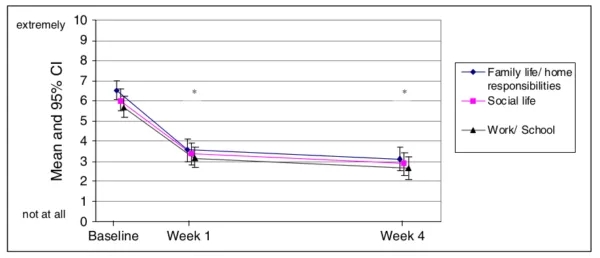
Furthermore, at the highest dose of 200 mg/kg body weight, they found a complete normalization of blood glucose levels. Blood glucose levels were reduced to levels comparable to those of non-diabetic controls. [63] While this study did not specifically assess AGEs production, it does highlight the potential for Rhodiola rosea to have an effect on blood glucose, possibly through AGEs intervention.
▊ Salidroside's Improvements in Blood Sugar Levels May Have Athletic Benefits:
Of course, this doesn't just make glucose "disappear," it helps the body use it efficiently for cellular functions. A study published in the 2008 edition of the European Journal of Pharmacology found that salidroside increased glucose uptake in skeletal muscle cells by stimulating AMPK. [64]
Notably, the treatment effects were no better than those of a control group tested with insulin. Instead, the extract mimicked the effects of this important glucose-regulating hormone, albeit to a lesser extent.
That being said, the researchers did find that when salidroside and insulin were used together, glucose uptake was increased. [64] While the benefits in terms of physical performance are more likely related to "feeling less tired," rhodiola rosea may also increase energy by helping move nutrients into the cells where they're needed!
▊ Salidroside (Mechanism of Action):
Salidroside works through multiple mechanisms of action, such as:
◎ Increases long-term potentiation of hippocampal synaptic transmission [5]
◎ Corrects the mammalian target of rapamycin (mTOR) pathway [6]
◎ Regulates hypoxia-inducible factor-1 (HIF-1) [7]
◎ Affects the release and uptake of neurotransmitters (dopamine, norepinephrine, epinephrine, histamine, and serotonin) [1]
◎ Inhibits monoamine oxidase (MOA) [8]
◎ Increases neuropeptide Y activity [9]
◎ Improves gut microbiota and fights obesity [10]
◎ It has also been shown to have a hormetic effect with a large stimulation zone [11]
▊ Benefits of Salidroside:
Through these complex physiological mechanisms, Salidroside may be able to:
★ Improve memory, learning, and cognition [5]
★ Reduce stress and anxiety [12]
★ Boost overall mood [12]
★ Reduce symptoms of depression [13]
★ Fight physical and mental fatigue [14, 15]
★ Improve athletic performance [16]
★ Regulate appetite [17]
★ Improve blood sugar levels [18]
★ Organ Protection – By reducing harmful oxidants and preventing hypoxia, [65] this herb has been shown to effectively protect the heart and liver. [66, 67]
★ Reduce Estrogen - A study by the American Association for Cancer Research found that in mice, Salidroside effectively inhibited the binding of estrogen and even increased estradiol levels in ovariectomized mice. [68]
★ Complementary Cancer Treatment - Researchers have found that Salidroside may have anti-cancer properties. [69, 70] Most of these studies have been conducted in vitro, but research is still ongoing in the scientific community.
▊ Salidroside (Safety and Dosage):
Salidroside generally exhibits very limited side effects and interactions with medications and other ingredients, [1] suggesting that it can generally be used safely.
A 1985 study showed that a dose of 3,360 mg/kg body weight was potentially toxic in mice. [71] Extrapolated to humans, this would be equivalent to more than 20,000 mg, depending on body weight. Daily doses of 200 to 600 mg are recommended, [1,71] but achieving such high doses is extremely unlikely.
※ References:
1. Panossian, A et al. “Rosenroot (Rhodiola
rosea): traditional use, chemical composition, pharmacology and clinical efficacy.” Phytomedicine :
international journal of phytotherapy and phytopharmacology vol. 17,7. (2010): 481-93.
doi:10.1016/j.phymed.2010.02.002. https://pubmed.ncbi.nlm.nih.gov/20378318/
2. Jafari, Mahtab et al. “Rhodiola: a
promising anti-aging Chinese herb.” Rejuvenation research vol. 10,4 (2007): 587-602.
doi:10.1089/rej.2007.0560. https://pubmed.ncbi.nlm.nih.gov/17990971/
3. Khaidaev Z, Menshikova TA. Medicinal plants
in Mongolian medicine. Ulan-Bator, Mongolia; 1978.
4. Saratikov SA, Krasnov EA. Rhodiola rosea is
a valuable medicinal plant (Golden Root) Tomsk State University Press, Tomsk, Russia; 1987.
5. Grech-Baran, Marta et al. “Biotechnological
approaches to enhance salidroside, rosin and its derivatives production in selected Rhodiola spp. in vitro
cultures.” Phytochemistry reviews : proceedings of the Phytochemical Society of Europe vol. 14,4 (2015):
657-674. doi:10.1007/s11101-014-9368-y. https://www.ncbi.nlm.nih.gov/pmc/articles/PMC4513219/
6. Li, Yonghong et al. “Rhodiola rosea L.: an
herb with anti-stress, anti-aging, and immunostimulating properties for cancer chemoprevention.” Current
pharmacology reports vol. 3,6 (2017): 384-395.
doi:10.1007/s40495-017-0106-1. https://www.ncbi.nlm.nih.gov/pmc/articles/PMC6208354/
7. Dimpfel, Wilfried et al. “Assessing the
Quality and Potential Efficacy of Commercial Extracts of Rhodiola rosea L. by Analyzing the Salidroside and
Rosavin Content and the Electrophysiological Activity in Hippocampal Long-Term Potentiation, a Synaptic Model of
Memory.” Frontiers in pharmacology vol. 9 425. 24 May. 2018,
doi:10.3389/fphar.2018.00425. https://www.ncbi.nlm.nih.gov/pmc/articles/PMC5976749/
8. HE, Yu-Xian, et al. “Sodium-Dependent
Glucose Transporter Was Involved in Salidroside Absorption in Intestine of Rats.” Chinese Journal of Natural
Medicines vol. 7,6 (2009):
444-48. https://www.sciencedirect.com/science/article/pii/S1875536409600686
9. Laplante, Mathieu, and David M. Sabatini. “MTOR
Signaling at a Glance.” Journal of Cell Science vol. 122 (2009): 3589-3594.
doi:10.1242/jcs.051011. https://jcs.biologists.org/content/122/20/3589
10. Yoon, Mee-Sup. “mTOR as a Key Regulator in
Maintaining Skeletal Muscle Mass.” Frontiers in physiology vol. 8 788. 17 Oct. 2017.
doi:10.3389/fphys.2017.00788. https://www.ncbi.nlm.nih.gov/pmc/articles/PMC5650960/
11. Dazert, Eva, and Michael N Hall. “MTOR
Signaling in Disease.” Current Opinion in Cell Biology vol 23,6 (2011):
744-755. https://www.sciencedirect.com/science/article/abs/pii/S0955067411001116
12. Liu, Zhongbo et al. “Rhodiola rosea extracts
and salidroside decrease the growth of bladder cancer cell lines via inhibition of the mTOR pathway and induction of
autophagy.” Molecular carcinogenesis vol. 51,3 (2012): 257-67.
doi:10.1002/mc.20780. https://www.ncbi.nlm.nih.gov/pubmed/21520297/
13. Fan, Xiang-Jun et al. “Salidroside induces
apoptosis and autophagy in human colorectal cancer cells through inhibition of PI3K/Akt/mTOR pathway.” Oncology
reports vol. 36,6 (2016): 3559-3567. doi:10.3892/or.2016.5138. https://www.ncbi.nlm.nih.gov/pubmed/27748934/
14. Chen, Ya-Nan et al. “Salidroside via ERK1/2
and PI3K/AKT/mTOR signal pathway induces mouse bone marrow mesenchymal stem cells differentiation into neural
cells.” Yao xue xue bao = Acta pharmaceutica Sinica vol. 48,8 (2013):
1247-52. https://pubmed.ncbi.nlm.nih.gov/24187831/
15. Zhong, Xiaoyong et al. “Effects of Salidroside
on cobalt chloride-induced hypoxia damage and mTOR signaling repression in PC12 cells.” Biological &
pharmaceutical bulletin vol. 37,7 (2014): 1199-206.
doi:10.1248/bpb.b14-00100. https://pubmed.ncbi.nlm.nih.gov/24989011/
16. Calabrese, Edward J et al. “Rhodiola rosea and
salidroside commonly induce hormesis, with particular focus on longevity and neuroprotection.” Chemico-biological
interactions, vol. 380 110540. 9 May. 2023,
doi:10.1016/j.cbi.2023.110540; https://linkinghub.elsevier.com/retrieve/pii/S0009-2797(23)00207-7
17. Calabrese, E J, and L A Baldwin. “Defining
Hormesis.” Human & Experimental Toxicology, vol. 21, no. 2, Feb. 2002, pp. 91–97,
doi:10.1191/0960327102ht217oa; https://pubmed.ncbi.nlm.nih.gov/12102503/
18. “HIF1A Hypoxia Inducible Factor 1 Subunit Alpha
[Homo Sapiens (Human)] – Gene – NCBI.” National Center for Biotechnology Information, U.S. National Library of
Medicine. https://www.ncbi.nlm.nih.gov/gene/3091
19. Sekhon, Mypinder S et al. “Clinical
pathophysiology of hypoxic ischemic brain injury after cardiac arrest: a “two-hit” model.” Critical care (London,
England) vol. 21,1 90. 13 Apr. 2017,
doi:10.1186/s13054-017-1670-9. https://www.ncbi.nlm.nih.gov/pmc/articles/PMC5390465/
20. Ziello, Jennifer E et al. “Hypoxia-Inducible
Factor (HIF)-1 regulatory pathway and its potential for therapeutic intervention in malignancy and ischemia.” The
Yale journal of biology and medicine vol. 80,2 (2007):
51-60. https://www.ncbi.nlm.nih.gov/pmc/articles/PMC2140184/
21. Zheng, Ken Yu-Zhong et al. “Salidroside
stimulates the accumulation of HIF-1α protein resulted in the induction of EPO expression: a signaling via blocking
the degradation pathway in kidney and liver cells.” European journal of pharmacology vol. 679,1-3 (2012):
34-9. https://pubmed.ncbi.nlm.nih.gov/22309741/
22. Zhang, Jing et al. “Inhibition of PHD3 by
salidroside promotes neovascularization through cell-cell communications mediated by muscle-secreted angiogenic
factors.” Scientific reports vol. 7 43935. 7 Mar. 2017,
doi:10.1038/srep43935. https://www.ncbi.nlm.nih.gov/pmc/articles/PMC5339704/
23. Purves, Dale. “The Biogenic Amines.”
Neuroscience. 2nd Edition., U.S. National Library of Medicine, 1 Jan.
1970. https://www.ncbi.nlm.nih.gov/books/NBK11035/
24. Thangam, Elden Berla et al. “The Role of
Histamine and Histamine Receptors in Mast Cell-Mediated Allergy and Inflammation: The Hunt for New Therapeutic
Targets.” Frontiers in immunology vol. 9 1873. 13 Aug. 2018,
doi:10.3389/fimmu.2018.01873. https://www.ncbi.nlm.nih.gov/pmc/articles/PMC6099187/
25. Berger, Miles et al. “The expanded biology of
serotonin.” Annual review of medicine vol. 60 (2009): 355-66.
doi:10.1146/annurev.med.60.042307.110802. https://www.ncbi.nlm.nih.gov/pmc/articles/PMC5864293/
26. Paravati, Stephen. “Physiology,
Catecholamines.” StatPearls [Internet]., U.S. National Library of Medicine, 26 July
2020. https://www.ncbi.nlm.nih.gov/books/NBK507716/
27. Laban, Tahrier Sub. “Monoamine Oxidase
Inhibitors (MAOI).” StatPearls [Internet]., U.S. National Library of Medicine, 22 Aug.
2020. https://www.ncbi.nlm.nih.gov/books/NBK539848/
28. Dunleavy, D L. “Mood and sleep changes with
monoamine-oxidase inhibitors.” Proceedings of the Royal Society of Medicine vol. 66,9 (1973):
951. https://www.ncbi.nlm.nih.gov/pmc/articles/PMC1645427/
29. Shabbir, Faisal et al. “Effect of diet on
serotonergic neurotransmission in depression.” Neurochemistry international vol. 62,3 (2013): 324-9.
doi:10.1016/j.neuint.2012.12.014. https://pubmed.ncbi.nlm.nih.gov/23306210/
30. Merikangas, K R, and J R Merikangas.
“Combination monoamine oxidase inhibitor and beta-blocker treatment of migraine, with anxiety and depression.”
Biological psychiatry vol. 38,9 (1995): 603-10.
doi:10.1016/0006-3223(95)00077-1. https://pubmed.ncbi.nlm.nih.gov/8573662/
31. Huang, Ling et al. “Multitarget-directed
benzylideneindanone derivatives: anti-β-amyloid (Aβ) aggregation, antioxidant, metal chelation, and monoamine
oxidase B (MAO-B) inhibition properties against Alzheimer’s disease.” Journal of medicinal chemistry vol. 55,19
(2012): 8483-92. https://pubmed.ncbi.nlm.nih.gov/22978824/
32. van Diermen, Daphne et al. “Monoamine oxidase
inhibition by Rhodiola rosea L. roots.” Journal of ethnopharmacology vol. 122,2 (2009): 397-401.
doi:10.1016/j.jep.2009.01.007. https://pubmed.ncbi.nlm.nih.gov/19168123/
33. Zhong, Zhi-feng, et al. “Neuroprotective
Effects of Salidroside on Cerebral Ischemia/Reperfusion-Induced Behavioral Impairment Involves the Dopaminergic
System.” Frontiers in Pharmacology, 13 Dec.
2019. https://www.frontiersin.org/articles/10.3389/fphar.2019.01433/full
34. Beck, B. “Neuropeptide Y in normal eating and
in genetic and dietary-induced obesity.” Philosophical transactions of the Royal Society of London. Series B,
Biological sciences vol. 361,1471 (2006): 1159-85.
doi:10.1098/rstb.2006.1855. https://www.ncbi.nlm.nih.gov/pmc/articles/PMC1642692/
35. Reichmann, Florian, and Peter Holzer.
“Neuropeptide Y: A stressful review.” Neuropeptides vol. 55 (2016): 99-109.
doi:10.1016/j.npep.2015.09.008. https://www.ncbi.nlm.nih.gov/pmc/articles/PMC4830398/
36. Yau, Y H C, and M N Potenza. “Stress and
eating behaviors.” Minerva endocrinologica vol. 38,3 (2013):
255-67. https://www.ncbi.nlm.nih.gov/pmc/articles/PMC4214609/
37. Ans, Armghan H., et al. “Neurohormonal
Regulation of Appetite and Its Relationship with Stress: A Mini Literature Review.” Cureus, 23 July
2018. https://www.cureus.com/articles/13630-neurohormonal-regulation-of-appetite-and-its-relationship-with-stress-a-mini-literature-review
38. Panossian, Alexander et al. “Adaptogens
stimulate neuropeptide y and hsp72 expression and release in neuroglia cells.” Frontiers in neuroscience vol. 6 6. 1
Feb. 2012, doi:10.3389/fnins.2012.00006. https://www.ncbi.nlm.nih.gov/pmc/articles/PMC3269752/
39. Liu, Jiuxi et al. “Salidroside protects mice
from high-fat diet-induced obesity by modulating the gut microbiota.” International immunopharmacology, vol. 120
110278. 14 May. 2023,
doi:10.1016/j.intimp.2023.110278; https://www.sciencedirect.com/science/article/abs/pii/S1567576923006008
40. Salari, Nader et al. “Prevalence of stress,
anxiety, depression among the general population during the COVID-19 pandemic: a systematic review and
meta-analysis.” Globalization and health vol. 16,1 57. 6 Jul. 2020,
doi:10.1186/s12992-020-00589-w. https://www.ncbi.nlm.nih.gov/pmc/articles/PMC7338126/
41. Mariotti, Agnese. “The effects of chronic
stress on health: new insights into the molecular mechanisms of brain-body communication.” Future science OA vol.
1,3 FSO23. 1 Nov. 2015, doi:10.4155/fso.15.21. https://www.ncbi.nlm.nih.gov/pmc/articles/PMC5137920/
42. Edwards, D et al. “Therapeutic effects and
safety of Rhodiola rosea extract WS 1375 in subjects with life-stress symptoms–results of an open-label study.”
Phytotherapy research : PTR vol. 26,8 (2012): 1220-5.
doi:10.1002/ptr.3712. https://pubmed.ncbi.nlm.nih.gov/22228617/
43. Cropley, Mark et al. “The Effects of Rhodiola
rosea L. Extract on Anxiety, Stress, Cognition and Other Mood Symptoms.” Phytotherapy research : PTR vol. 29,12
(2015): 1934-9. doi:10.1002/ptr.5486. https://pubmed.ncbi.nlm.nih.gov/26502953/
44. Yang, Longfei et al. “The Effects of
Psychological Stress on Depression.” Current neuropharmacology vol. 13,4 (2015): 494-504.
doi:10.2174/1570159×1304150831150507. https://www.ncbi.nlm.nih.gov/pmc/articles/PMC4790405/
45. Kumar, Anil et al. “Stress: Neurobiology,
consequences and management.” Journal of pharmacy & bioallied sciences vol. 5,2 (2013): 91-7.
doi:10.4103/0975-7406.111818. https://www.ncbi.nlm.nih.gov/pmc/articles/PMC3697199/
46. Nutt, David J. “Relationship of
neurotransmitters to the symptoms of major depressive disorder.” The Journal of clinical psychiatry vol. 69 Suppl E1
(2008): 4-7. https://pubmed.ncbi.nlm.nih.gov/18494537/
47. Darbinyan, V et al. “Clinical trial of
Rhodiola rosea L. extract SHR-5 in the treatment of mild to moderate depression.” Nordic journal of psychiatry vol.
61,5 (2007): 343-8. doi:10.1080/08039480701643290. https://pubmed.ncbi.nlm.nih.gov/17990195/
48. “Rhodiola Rosea Therapy of Major Depressive
Disorder.” ClinicalTrials.gov. https://clinicaltrials.gov/ct2/show/NCT01098318
49. Rose, D M et al. “Associations of fatigue to
work-related stress, mental and physical health in an employed community sample.” BMC psychiatry vol. 17,1 167. 5
May. 2017, doi:10.1186/s12888-017-1237-y. https://www.ncbi.nlm.nih.gov/pmc/articles/PMC5420158/
50. van Dam, Arno. “Subgroup Analysis in Burnout:
Relations Between Fatigue, Anxiety, and Depression.” Frontiers in psychology vol. 7 90. 4 Feb. 2016,
doi:10.3389/fpsyg.2016.00090. https://www.ncbi.nlm.nih.gov/pmc/articles/PMC4740380/
51. Spasov, A A et al. “A double-blind,
placebo-controlled pilot study of the stimulating and adaptogenic effect of Rhodiola rosea SHR-5 extract on the
fatigue of students caused by stress during an examination period with a repeated low-dose regimen.” Phytomedicine :
international journal of phytotherapy and phytopharmacology vol. 7,2 (2000): 85-9.
doi:10.1016/S0944-7113(00)80078-1. https://pubmed.ncbi.nlm.nih.gov/10839209/
52. Shevtsov, V A et al. “A randomized trial of two
different doses of a SHR-5 Rhodiola rosea extract versus placebo and control of capacity for mental work.”
Phytomedicine : international journal of phytotherapy and phytopharmacology vol. 10,2-3 (2003): 95-105.
doi:10.1078/094471103321659780. https://pubmed.ncbi.nlm.nih.gov/12725561/
53. De Bock, Katrien et al. “Acute Rhodiola rosea
intake can improve endurance exercise performance.” International journal of sport nutrition and exercise metabolism
vol. 14,3 (2004): 298-307. doi:10.1123/ijsnem.14.3.298. https://pubmed.ncbi.nlm.nih.gov/15256690/
54. Mannucci, C et al. “Serotonin involvement in
Rhodiola rosea attenuation of nicotine withdrawal signs in rats.” Phytomedicine : international journal of
phytotherapy and phytopharmacology vol. 19,12 (2012): 1117-24.
doi:10.1016/j.phymed.2012.07.001. https://pubmed.ncbi.nlm.nih.gov/22921986/
55. Panossian, Alexander et al. “Synergy and
Antagonism of Active Constituents of ADAPT-232 on Transcriptional Level of Metabolic Regulation of Isolated
Neuroglial Cells.” Frontiers in neuroscience vol. 7 16. 20 Feb. 2013,
doi:10.3389/fnins.2013.00016. https://www.ncbi.nlm.nih.gov/pmc/articles/PMC3576868/
56. Kennett, G A et al. “Anxiolytic-like actions
of the selective 5-HT4 receptor antagonists SB 204070A and SB 207266A in rats.” Neuropharmacology vol. 36,4-5
(1997): 707-12. doi:10.1016/s0028-3908(97)00037-3. https://pubmed.ncbi.nlm.nih.gov/9225297/
57. Curzon, G. “Serotonin and appetite.” Annals of
the New York Academy of Sciences vol. 600 (1990): 521-30; discussion 530-1.
doi:10.1111/j.1749-6632.1990.tb16907.x. https://pubmed.ncbi.nlm.nih.gov/2252331/
58. Cifani, Carlo et al. “Effect of salidroside,
active principle of Rhodiola rosea extract, on binge eating.” Physiology & behavior vol. 101,5 (2010): 555-62.
doi:10.1016/j.physbeh.2010.09.006. https://pubmed.ncbi.nlm.nih.gov/20837037/
59. Campos, Carlos. “Chronic hyperglycemia and
glucose toxicity: pathology and clinical sequelae.” Postgraduate medicine vol. 124,6 (2012): 90-7.
doi:10.3810/pgm.2012.11.2615. https://pubmed.ncbi.nlm.nih.gov/23322142/
60. Mouri, MIchelle. “Hyperglycemia.” U.S.
National Library of Medicine. 10 Sept. 2020. https://www.ncbi.nlm.nih.gov/books/NBK430900/
61. Uribarri, Jaime et al. “Advanced glycation end
products in foods and a practical guide to their reduction in the diet.” Journal of the American Dietetic
Association vol. 110,6 (2010): 911-16.e12.
doi:10.1016/j.jada.2010.03.018. https://www.ncbi.nlm.nih.gov/pmc/articles/PMC3704564/
62. Mao, Gen-Xiang et al. “Protective role of
salidroside against aging in a mouse model induced by D-galactose.” Biomedical and environmental sciences : BES vol.
23,2 (2010): 161-6. doi:10.1016/s0895-3988(10)60047-5. https://pubmed.ncbi.nlm.nih.gov/20514993/
63. Li, Fenglin et al. “Protective effect of
salidroside from Rhodiolae Radix on diabetes-induced oxidative stress in mice.” Molecules (Basel, Switzerland) vol.
16,12 9912-24. 1 Dec. 2011,
doi:10.3390/molecules16129912. https://www.ncbi.nlm.nih.gov/pmc/articles/PMC6264537/
64. Li, Han-Bing et al. “Salidroside stimulated
glucose uptake in skeletal muscle cells by activating AMP-activated protein kinase.” European journal of
pharmacology vol. 588,2-3 (2008): 165-9.
doi:10.1016/j.ejphar.2008.04.036. https://pubmed.ncbi.nlm.nih.gov/18501890/
65. Li, Xue et al. “Salidroside stimulates DNA
repair enzyme Parp-1 activity in mouse HSC maintenance.” Blood vol. 119,18 (2012): 4162-73.
doi:10.1182/blood-2011-10-387332. https://www.ncbi.nlm.nih.gov/pmc/articles/PMC3359737/
66. Zhu, Ye et al. “Salidroside protects against
hydrogen peroxide-induced injury in cardiac H9c2 cells via PI3K-Akt dependent pathway.” DNA and cell biology vol.
30,10 (2011): 809-19. doi:10.1089/dna.2010.1183. https://pubmed.ncbi.nlm.nih.gov/21563965/
67. Ouyang, Jing-Feng et al. “In-vitro promoted
differentiation of mesenchymal stem cells towards hepatocytes induced by salidroside.” The Journal of pharmacy and
pharmacology vol. 62,4 (2010): 530-8. doi:10.1211/jpp.62.04.0017. https://pubmed.ncbi.nlm.nih.gov/20604844/
68. Eagon, Patricia K., et al. “Evaluation of the
Medicinal Botanical Rhodiola Rosea for Estrogenicity.” Cancer Research, American Association for Cancer Research. 1
Apr. 2004. https://cancerres.aacrjournals.org/content/64/7_Supplement/663.3
69. Liu, Zhongbo et al. “Rhodiola rosea extracts
and salidroside decrease the growth of bladder cancer cell lines via inhibition of the mTOR pathway and induction of
autophagy.” Molecular carcinogenesis vol. 51,3 (2012): 257-67.
doi:10.1002/mc.20780. https://www.ncbi.nlm.nih.gov/pmc/articles/PMC3144985/
70. Hu, Xiaolan et al. “A preliminary study: the
anti-proliferation effect of salidroside on different human cancer cell lines.” Cell biology and toxicology vol.
26,6 (2010): 499-507. doi:10.1007/s10565-010-9159-1. https://pubmed.ncbi.nlm.nih.gov/20309622/
71. Khanum, Farhath, et al. “Rhodiola Rosea: A
Versatile Adaptogen.” Comprehensive Reviews in Food Science and Food Safety. John Wiley & Sons, Ltd, 20 Nov.
2006. https://onlinelibrary.wiley.com/doi/pdf/10.1111/j.1541-4337.2005.tb00073.x
Packaging:
10g/Aluminum Foil Bag, 20g/Aluminum Foil Bag, 50g/Aluminum Foil Bag, 100g/Aluminum Foil Bag, 200g/Aluminum Foil Bag, 500g/Aluminum Foil Bag, 1kg/Aluminum Foil Bag, 5kg/Carton or according to the specific requirements from customers.
Storage Conditions:
Stored in airtight containers in a cool dry place before using; kept away from direct sunlight, heat and moisture.
Shelf Life:
24 months from the date of manufacturing when stored under the above conditions.


